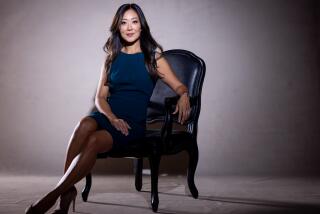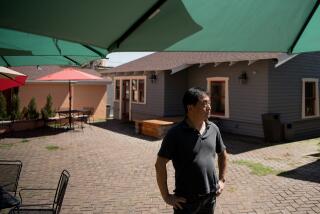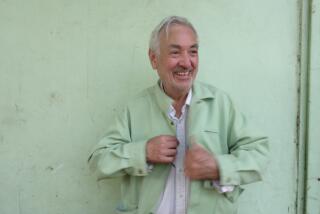LEARNING CURVE: LEE, BURKHART, LIU INC. : Schema for Success : ArchitectsŌĆÖ Master Plan: to Stay Hungry
Since helping to found Lee, Burkhart, Liu Inc. in 1986, Ken Lee has seen his architectural firm grow from his partnerŌĆÖs kitchen table to a warehouse with 35 architects under its roof. He has learned to attract new business by keeping the mind-set of a small, hungry firm. Lee was interviewed by Karen Kaplan.
*
We started our firm in 1986, in Ken LiuŌĆÖs kitchen. By our fourth year, our firm was going up against the big guys in town. We only had 15 or 20 employees, but we were competing with firms that were 50 or 60 years old and had hundreds of employees. We had to find an edge because we couldnŌĆÖt compete on the basis of size or on our body of completed work.
We made a personal commitment to stay hungry, to stay lean and to avoid bureaucracy. We had that attitude when we were three people, and we try to maintain that attitude now that weŌĆÖre up to 55 people. None of the principals has a private secretary. When we reached a critical size, we brought in an office manager to take care of accounting and personnel. But we still think as if we were a small office.
This is a 24-hour job. Our clients have our home phone numbers, and we always tell them that if thereŌĆÖs ever any problem of any kind, just give us a call.
WeŌĆÖre in a warehouse building with a fairly nondescript driveway. ItŌĆÖs a pretty raw space. WeŌĆÖre not dealing with oak-paneled walls and real flashy corporate interiors. Our clients come in and see weŌĆÖre not a high-overhead design firm. We take the savings and apply those hours to our projects.
There are firms that focus on different building types, like sports arenas or civic centers or aquariums. Our firm is focused on health-care projects. Our clients range from free-standing hospitals to large national chains.
The process of doing health-care design is very labor-intensive. If youŌĆÖre doing a design for a commercial office building, youŌĆÖre just dealing with an owner and-or a developer. In a hospital setting, you have 80 or 90 departments, and each one has a department head and a head physician.
We take a noncorporate approach to our presentations. We try not to come off as stiff as cardboard.
We do a lot of homework in advance of meeting a client to see what kind of cultural attitude they have about design and what kind of community involvement is important to them.
The fever has caught on. By staying with the attitude of a small office environment, we have found we remain very hungry in going after new work. We have avoided the attitude of complacency in pursuing new business opportunities. It gives us kind of a psychological edge.
On the benefits of thinking small . . .
ŌĆ£We have avoided the attitude of complacency in pursuing new business opportunities. It gives us kind of a psychological edge.ŌĆØ
On what it means to act like a small firm . . .
ŌĆ£We made a personal commitment to stay hungry, to stay lean and to avoid bureaucracy. We had that attitude when we were three people and we try to maintain that attitude now that weŌĆÖre up to 55 people.ŌĆØ
On why Lee maintains a small-firm mentality . . .
ŌĆ£We had to find an edge because we couldnŌĆÖt compete on the basis of size or on our body of completed work.ŌĆØ
(BEGIN TEXT OF INFOBOX / INFOGRAPHIC)
AT A GLANCE
Company: Lee, Burkhart, Liu Inc.
Owners: Ken Lee, Erich Burkhart and Ken Liu
Nature of business: Architectural firm specializing in health-care projects
Location: Santa Monica
Number of employees: 55
Annual revenue: $12.5 million
More to Read
Inside the business of entertainment
The Wide Shot brings you news, analysis and insights on everything from streaming wars to production ŌĆö and what it all means for the future.
You may occasionally receive promotional content from the Los Angeles Times.






